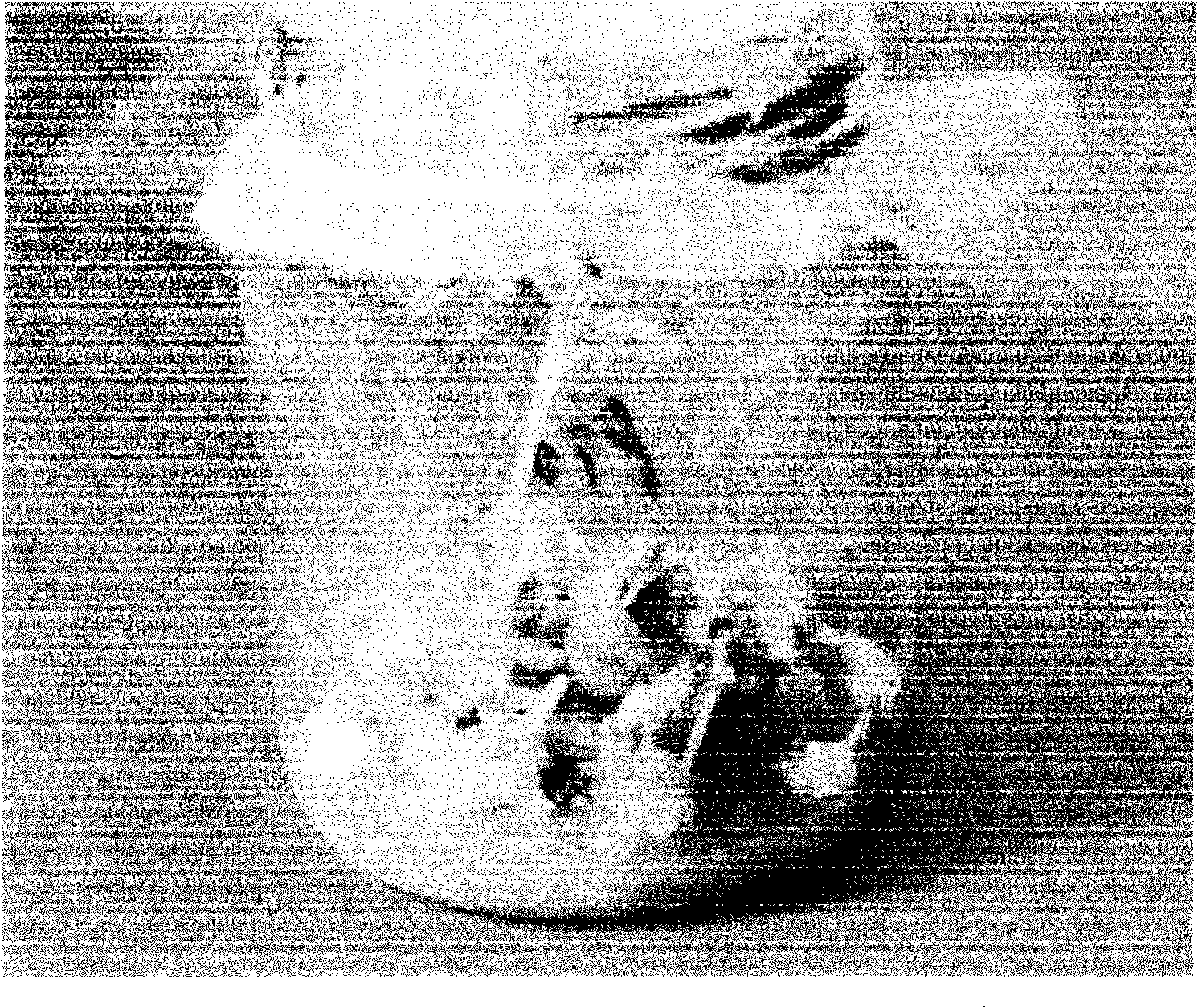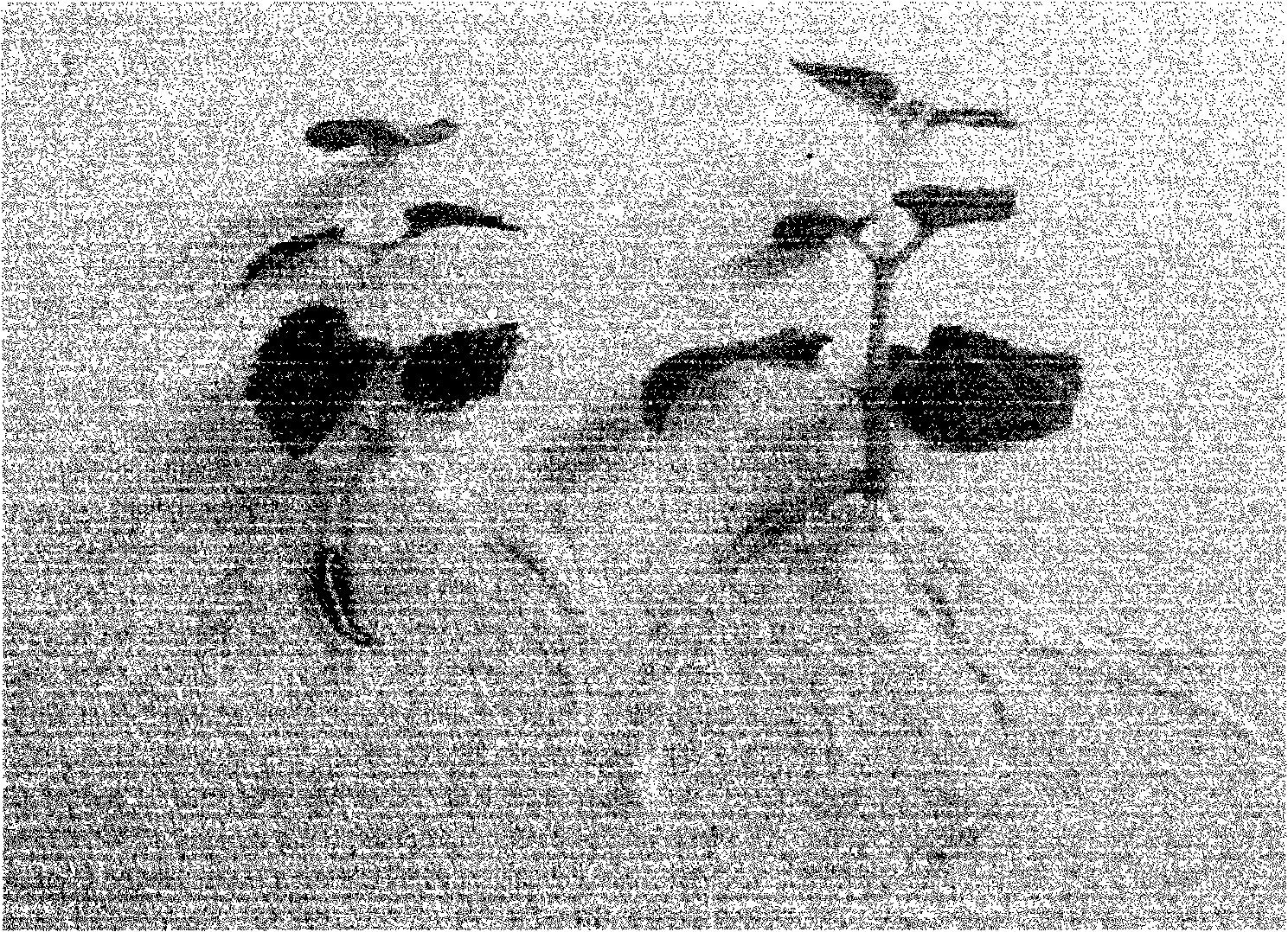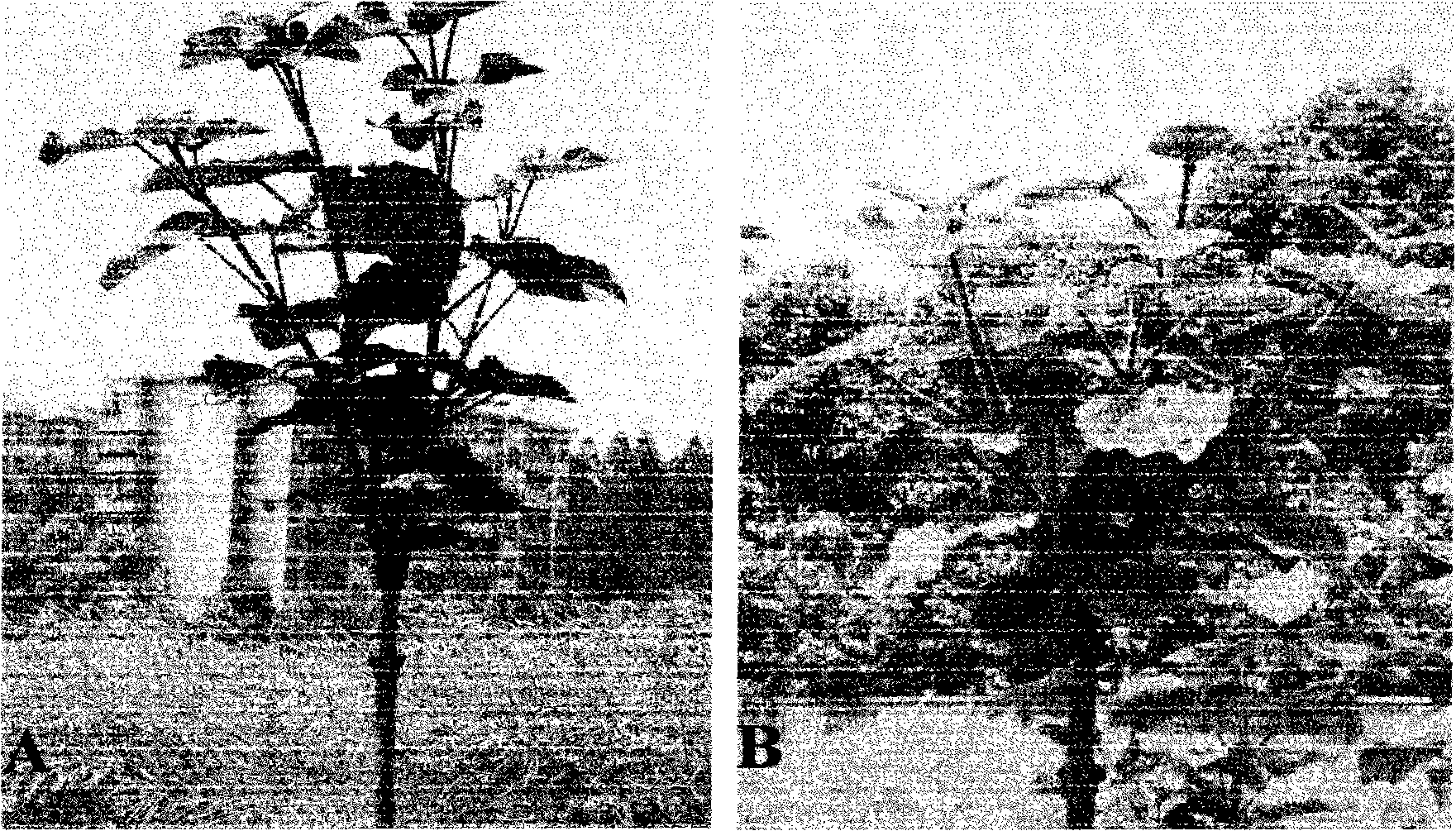Method for breeding polyploid royal paulownia by combination of in vitro culture and colchicine treatment
A technology of colchicine and in vitro culture, applied in the directions of botanical equipment and methods, biochemical equipment and methods, horticultural methods, etc., can solve the problems of low frequency of polyploid trees being difficult to survive, and achieve good viewing and saving. The effect of nutrition
- Summary
- Abstract
- Description
- Claims
- Application Information
AI Technical Summary
Problems solved by technology
Method used
Image
Examples
Embodiment 1
[0041] Example 1. Breeding of a new tetraploid Paulownia tomentosa strain "Paulownia tomentosa 108"
[0042] a. Select parent
[0043] The excellent Paulownia tomentosa plant Hongshan 008, which has no arbuscular disease and has flowered, was used as the parent for tissue culture.
[0044] b. Placenta is the best explant
[0045] The stem segments, leaves and placenta in the fruit 30-35 days after flowering are taken from the Paulownia tomentosa plant of Hongshan 008 as explants for tissue culture. The cultured contamination rate (number of polluted explants / total number of inoculated explants×100%), rate of callus induction (number of callus pieces / number of inoculated explants×100%) and rate of differentiation and germination of callus ( The number of differentiated and sprouted callus / callus total number × 100%) was compared and found that the placenta was explant contamination rate was 0, the callus induction rate was 100%, and the callus differentiated and sprouted rate...
PUM
 Login to View More
Login to View More Abstract
Description
Claims
Application Information
 Login to View More
Login to View More - R&D
- Intellectual Property
- Life Sciences
- Materials
- Tech Scout
- Unparalleled Data Quality
- Higher Quality Content
- 60% Fewer Hallucinations
Browse by: Latest US Patents, China's latest patents, Technical Efficacy Thesaurus, Application Domain, Technology Topic, Popular Technical Reports.
© 2025 PatSnap. All rights reserved.Legal|Privacy policy|Modern Slavery Act Transparency Statement|Sitemap|About US| Contact US: help@patsnap.com



